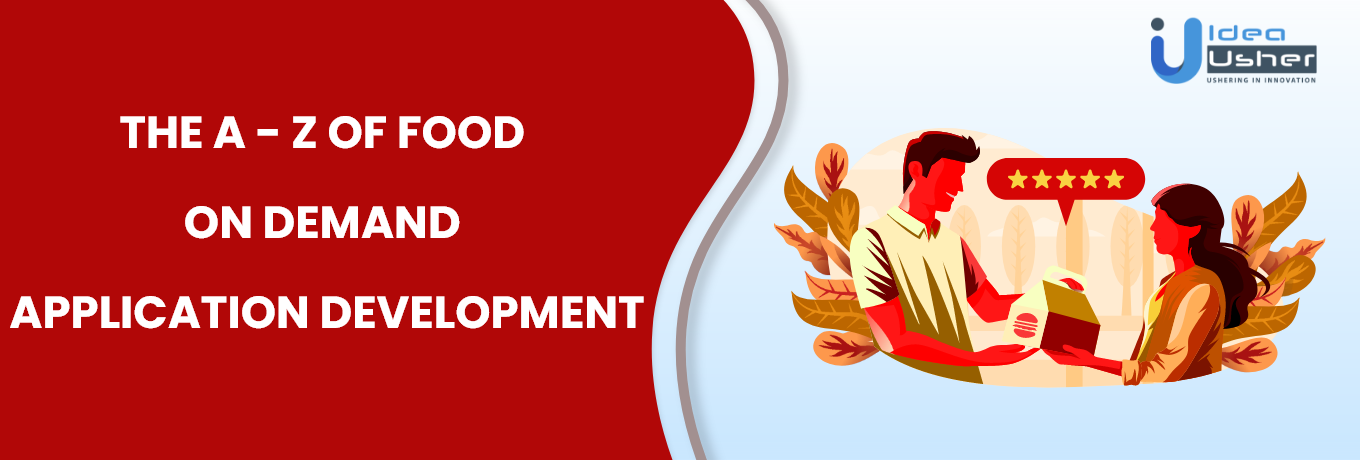
Food On Demand applications have taken up the food delivery space by storm! The reason behind its popularity is the convenience that it offers. Within a few taps and clicks on your food delivery app, you can get your favorite meal delivered at your doorstep without any hassle.
If you’re looking forward to building a Food On Demand application, you’re just at the right place.
In this article, we will discuss the following:
- Why Make an On Demand Food Delivery App?
- How Does a Food Delivery App Work?
- Three Successful Business Models of an On Demand Food Delivery App.
- Features of an On Demand Food Delivery App
And much more!
Let’s get started.
Why Make an On Demand Food Delivery App?
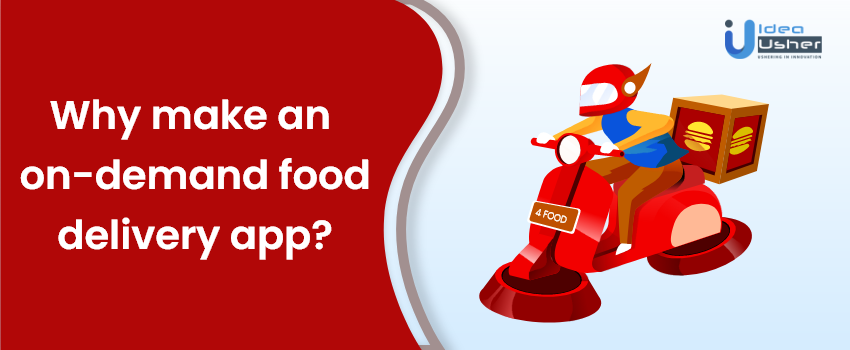
The Food On Demand delivery business is booming.
The food delivery industry is expected to grow to $320 billion by 2029. It saw its largest growth in five years in 2020 due to the coronavirus pandemic.
Due to its ease and speed, the on demand food delivery business has challenged the dining-out restaurant business. More than two thirds (65 percent) of restaurant delivery users agree that it’s more fun going to a restaurant than ordering in.
Other important statistics include:
- 60% of U.S. consumers order delivery or takeout once a week.
- 31% say they use these third-party delivery services at least twice a week.
- 33% of consumers say they would be willing to pay a higher fee for faster delivery service.
- 87% of Americans who use third-party food delivery services agree that it makes their lives easier.
With such insights into the market, it is clear that there is a huge demand for these services, and starting your Food On Demand delivery application can help you reach new heights.
Let’s briefly discuss how a food delivery app works.
How Does a Food Delivery App Work?
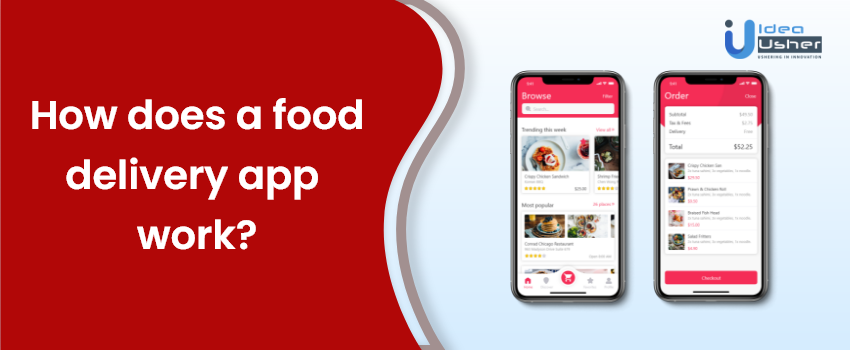
An on demand food delivery application has simple steps ranging from food ordering by a customer to food delivery by an agent. However, the process can vary according to different business models.
Let us discuss each of them in detail, along with their functioning, advantages, and disadvantages.
-
The Order Only Model
As the name suggests, your work is to help customers place an order only via your application.
In this Food On Demand business model, you will serve as a mediator and provide an online platform where the customers and restaurants can connect. This model has effectively replaced the traditional way of ordering via phone calls.
Best food delivery apps such as JustEat, GrubHub, and FoodPanda follow this business model.
Food Ordering Process:
- The users register on your platform.
- The users can view all the available choices and place an order via your Food On Demand delivery system.
- The restaurant will then get an alert on their dashboard as soon as a customer places an order.
- The restaurant will send a confirmation to the customer via an email or the application itself.
Delivery Process:
- The restaurant will assign a delivery agent who will deliver the food at the customer’s doorstep.
- In case of issues or emergencies, the customer’s contact number is available to the delivery agent and vice versa.
Advantages of Order Only Business Model:
- You can charge a flat commission from the restaurants that you’ve partnered with.
- You only need to handle the ordering process as you are not in charge of the delivery services.
- This business model is scalable and experiences remarkable growth with time.
Disadvantages of Order Only Business Model:
- Food On Demand start-ups cannot optimize the food quality and delivery services as their role is limited to ordering only. If the customers are not satisfied with the restaurant, it might have an impact on your business.
- Attracting food-joints may be a difficult task initially.
- You need to focus extensively on marketing and advertising.
2. The Order and Delivery Model
This is the most common Food On Demand business model.
In this model, your role is extended to both ordering and delivering. This means the customers, restaurants, and delivery partners come under your purview.
Best food delivery apps such as UberEats, DoorDash, and Deliveroo, follow this business model.
Food Ordering Process:
- The users register on your platform.
- The users can view all the available choices and place an order via your Food On Demand delivery system.
- The customers can pay via the app or opt for Cash on Delivery. Their bill amount will include the extra delivery charges.
- The customers can also provide additional information such as: “Don’t send cutlery,” “Don’t ring the bell,” and so on.
- The restaurant will then get an alert on their dashboard as soon as a customer places an order.
- The restaurant will send a confirmation to the customer via an email or the application itself.
Delivery Process:
- The nearest delivery agent will receive a notification from the restaurant.
- The delivery agent can accept/decline the request based on his availability and proximity to the restaurant.
- If unavailable, the next nearest agent will be notified.
- The delivery agent will then pick up the order as soon as it is prepared and deliver it to the customer’s location.
- The agent will collect the cash for the food. (in case of COD)
- The delivery agent can ask the customer to provide feedback or rating.
Advantages of Order and Delivery Business Model:
- You can charge a flat commission from the restaurants and charge an additional delivery fee from the customers.
- You can optimize your delivery services by providing training to your delivery agents.
- Restaurants will happily partner with your Food On Demand application because they only need to prepare the food as you will be in charge of the ordering and delivery process.
- Once you’ve established a brand for yourself, there is less scope for competition.
Disadvantages of Order and Delivery Business Model:
- This business model requires more resources than the Order Only model as you will work with both – software and logistics.
- Hiring and training delivery employees can be a cumbersome process.
- It takes more time to receive a return on investment as compared to the previous model.
3. The Fully Integrated Model
This Food On Demand business model is slightly different from the above two. You need to have a food venture to operate on this business model.
In this model, you need to look after all the three components of the full-cycle approach, i.e., ordering, cooking, and delivering. Apart from the software and logistics, you can employ or partner with chefs to provide meals to your customers.
Best food delivery apps such as RocketFood, Extra Plate, and Eat Purely follow this business model.
Food Ordering Process:
- The users register on your platform.
- The users can view all the available choices and place an order via your Food On Demand delivery system.
- The customers can pay via the app or opt for Cash on Delivery. Their bill amount will include the extra delivery charges.
- The customers can also provide additional information such as: “Don’t send cutlery,” “Don’t ring the bell,” and so on.
- Your kitchen will then get an alert as soon as a customer places an order.
- Your kitchen will send a confirmation to the customer via an email or the application itself.
Delivery Process:
This process can be done in two ways – manual (requires admin support) and automated (no admin needed)
As you will already be in charge of all the processes, you can choose to automate the delivery process, and the subsequent operations will follow as:
- The nearest delivery agent will receive a notification from the restaurant.
- The delivery agent will then pick up the order as soon as it is prepared and deliver it to the customer’s location.
- The agent will collect the cash for the food. (in case of COD)
- The delivery agent can ask the customer to provide feedback or rating.
Advantages of Fully Integrated Business Model:
- You don’t need to rely on a third party for the services.
- Instead of earning commission from restaurants, you will earn big.
- You can enhance and optimize all the services, including ordering, cooking, and delivering, and ultimately increase customer satisfaction.
- There will hardly be any competitors due to entry barriers (high start-up costs and other obstacles.)
Disadvantages of Fully Integrated Business Model:
- The operational costs of running the business are very high.
- You will need to hire, train, and retain many employees to keep your services running.
- It takes a considerable amount of time to receive a return on investment.
If you are looking for more guidance on making your Food On Demand application, we are more than happy to assist you. Feel free to reach out to us.
Features of a Food On Demand App
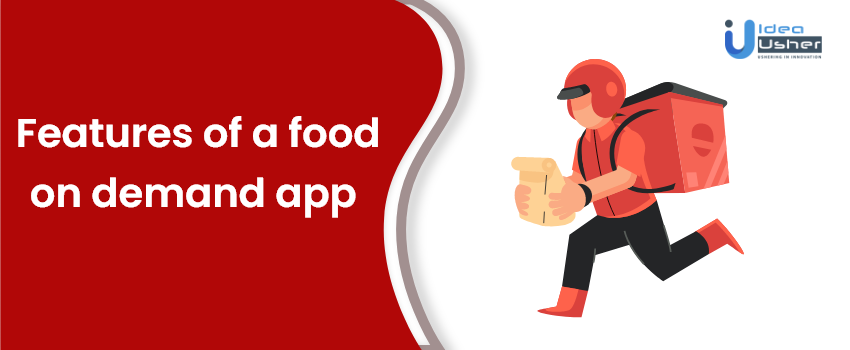
There are three versions of Food On Demand apps, namely:
- User App
- Delivery Agent app
- Admin Panel
Each version has its own set of features. We will now discuss each version’s basic elements and our on-demand food delivery app’s unique features.
User App
The user application variant has the following features:
-
Registration and Log-in:
You can provide the option of registration via linking email or contact number. The user can log-in with the same credentials whenever they use the app next time.
-
Restaurant Listings:
A comprehensive list of restaurants and meals should be available to the customers on your Food On Demand app. They can choose their preferred option accordingly.
-
Checkout and Payment:
The application should have an easy check-out process. It should include multiple payment options such as Debit Card, Credit Card, Net Banking, E-wallets, and COD.
-
Order Tracking:
Customers should be able to track their orders to have a clear idea about where their product is and how much time it will take to reach them.
-
Order History:
Customers should be able to access their order history and other information such as product invoices and details. They should also be able to re-order their previously ordered products.
-
Feedback and Rating:
To know how beneficial your services are to the customers, you should offer them the option of giving feedback and rating. This will help you improve your services and cater to your customers more efficiently.
Unique Features that Idea Usher Includes in their Food On Demand Delivery App:
- One-click registration with social media.
- Option to provide special instructions to the delivery agent.
- Option to contact delivery agents.
- Search option with filters to optimize results.
- Advanced settings option.
Delivery Agents
The delivery agents application variant has the following features:
-
Profile:
This feature allows the delivery agent to add their details such as name, address, phone number, and relevant identification proof.
-
GPS Tracking and Status of Delivery:
The navigation feature allows the driver to reach the customer’s exact location. He can also change the status of delivery to En route, Arrived, Delivered, etc.
-
Order History:
The driver can access the order history, including the delivered, not delivered, and canceled orders via this feature.
-
Total Earnings:
This feature allows the drivers to track down his daily, weekly, and monthly earnings.
Unique Features that Idea Usher Includes
- Accept/Decline requests as per schedule, availability, and proximity of orders.
- Daily Reports – completed, pending services, canceled, and forwarded services, along with penalty, if any.
- View Performance – based on customer feedback.
- Route Optimization.
- Instant Notifications.
Admin Panel
The admin panel has the following features:
-
Dashboard
This feature allows the admin to manage and supervise the delivery agents and customers.
-
Managing Delivery Agents
Admins can access each delivery agent’s profiles via this feature. They can access all the information related to their total earnings, penalties, incentives, and ratings.
-
Managing Customers
Admins can handle all the customer queries and access information such as cancellation fees, discount codes, the total number of orders, etc.
-
Manage pricing and commissions
Admins can manage all the prices mentioned in the application, look after the commissions, and make changes accordingly if required.
Unique Features that Idea Usher Includes in their Food On-Demand Delivery App:
- Analytics and sales reports
- Efficient performance monitoring.
- Multi-admin dashboard.
Make a Customer-loving Food App With Us!
After having gone through the overview of the on-demand food delivery market, the various business models, and the features of a food delivery app, I am sure you are more confident than before about building your project.
Any developer can offer you the basic features while making the application. However, are you willing to settle for something basic?
We understand that each client is unique, and so are their requirements. Therefore, your needs are our priority.
Our wide range of custom features can help modify your on demand food delivery application just as you need. We are here to offer you top-tier mobile solutions that will make you stand out from your competitors.
You can also get a quick feature overview of our User App, Service Specialist App, and Admin Panel of our
Our applications are thoughtfully designed by keeping all your requirements in mind. By offering a great User Experience and User Interface, we ensure that your end-users love your application.
Contact us now. Idea Usher is more than happy to help you. Do not forget to check out our portfolio of Mobile Apps here.
FAQ
Q: What are the steps to create a successful food delivery app?
A: To create a successful food delivery app, you should follow these five simple steps: identify your target audience, conduct a competitor analysis, hire the best developers for an on-demand food delivery app, integrate powerful features into your app, and monetize your application.
Q: How much does it cost to develop a food delivery app?
A: The cost of developing a food delivery app can vary depending on several factors such as project scope, complexity, budget, timeline, features and functionality, target audience, geographic location, number of software developers, tech stack, and more.
Q: Can food delivery apps be profitable?
A: Yes, food delivery apps can be profitable if you focus on enhancing the user experience by offering a user-friendly interface, convenience, a wide range of offerings, attractive features, analyzing customer behavior, delivering personalized offers, and enhancing customer loyalty through loyalty programs.
Q: What are the essential features of a successful food delivery app?
A: To create a successful food delivery app, it is important to prioritize the user experience. This includes adding a search bar that allows users to easily search for specific restaurants or food items, implementing categories such as “last ordered,” “often ordered,” or “best-selling” to improve the search experience, offering a wide range of offerings, integrating attractive features, analyzing customer behavior, delivering personalized offers, and implementing loyalty programs to enhance customer loyalty.
Q: How can I make my food delivery app stand out from competitors?
A: To make your food delivery app stand out from competitors, it is essential to offer a unique value proposition that differentiates your app from others in the market. You can achieve this by offering exclusive deals or promotions, implementing a referral program, or partnering with local restaurants to offer a wider range of offerings. Additionally, providing excellent customer service and listening to user feedback can help improve user satisfaction and drive customer loyalty.



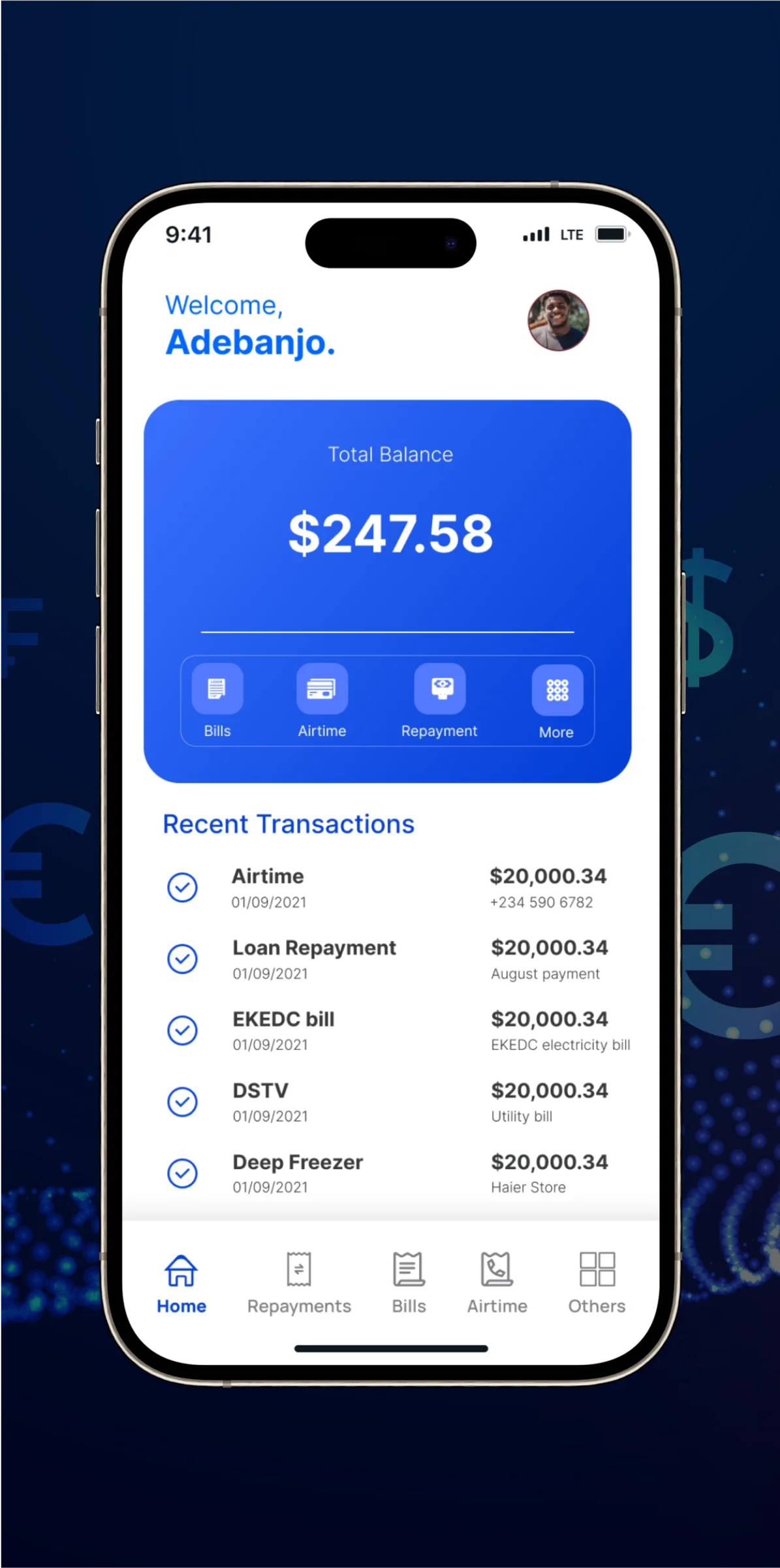
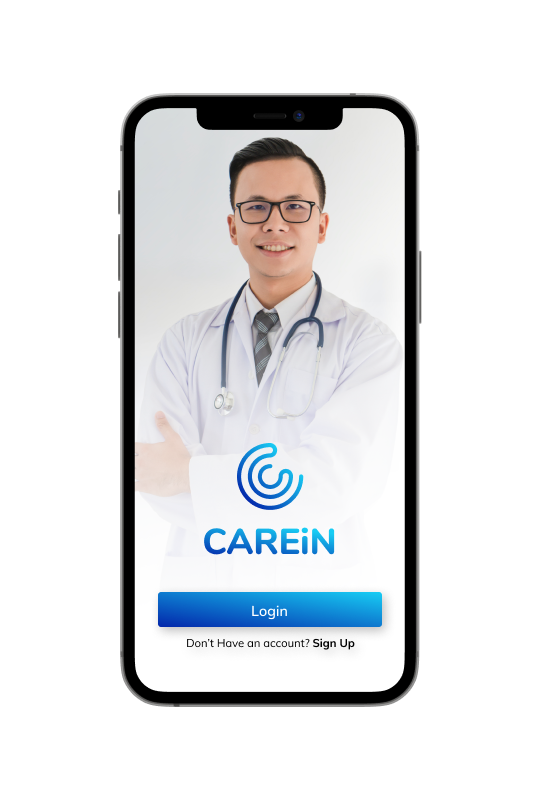
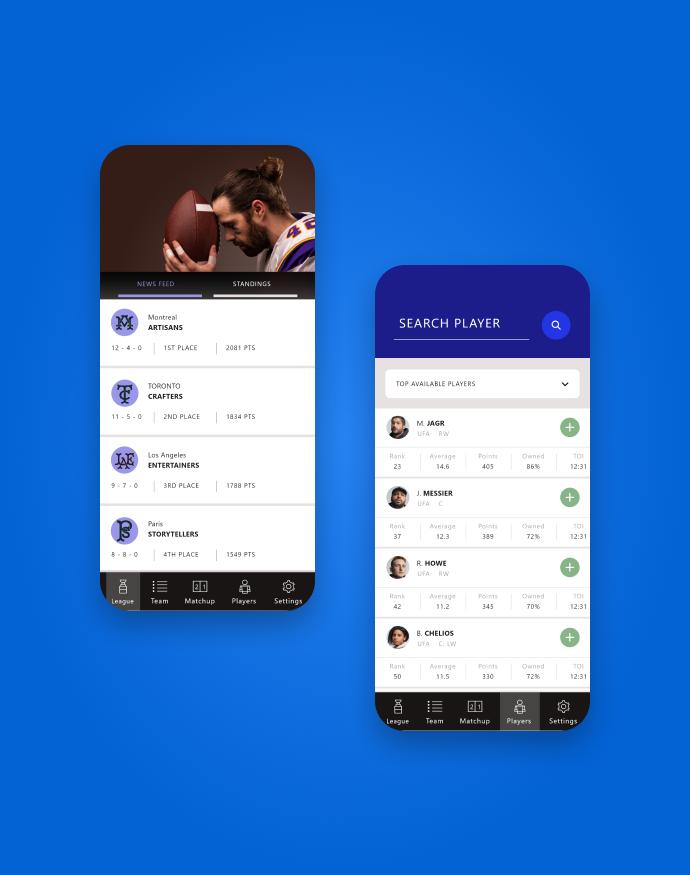
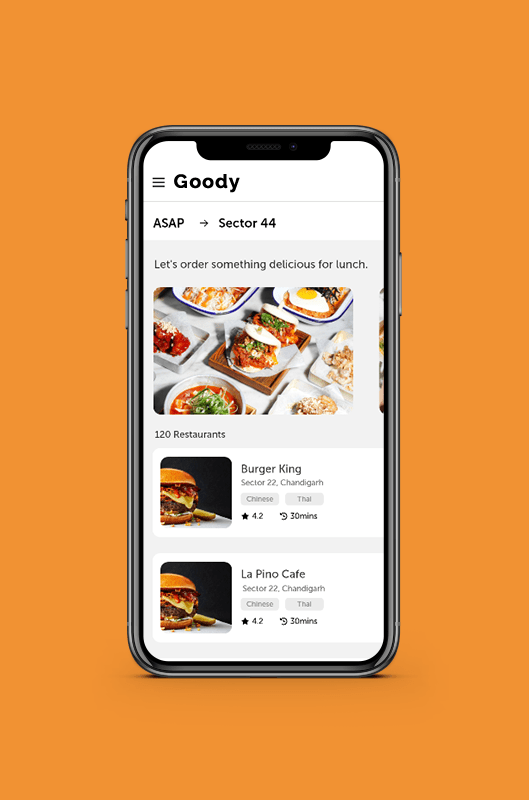

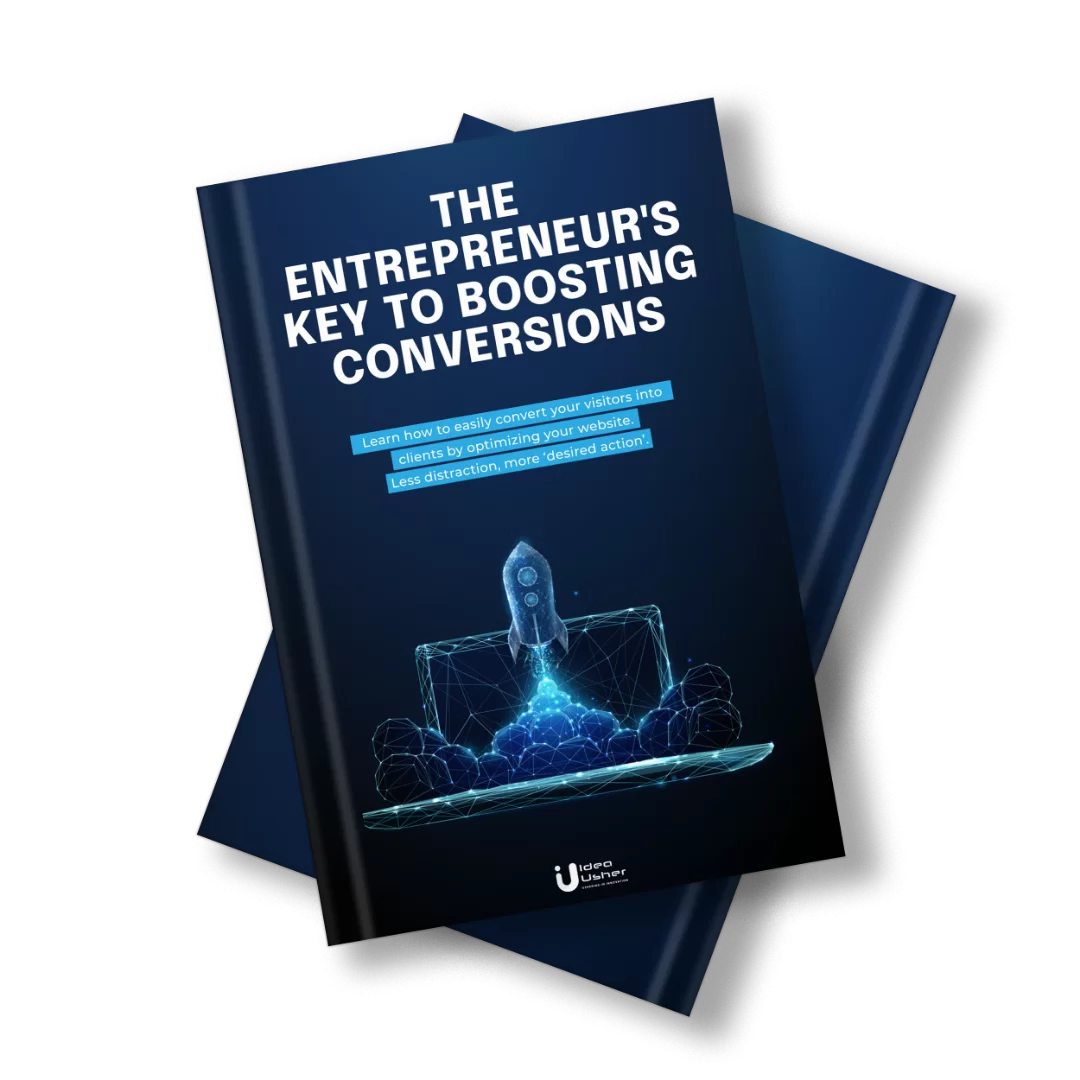
Khushboo Rajpal